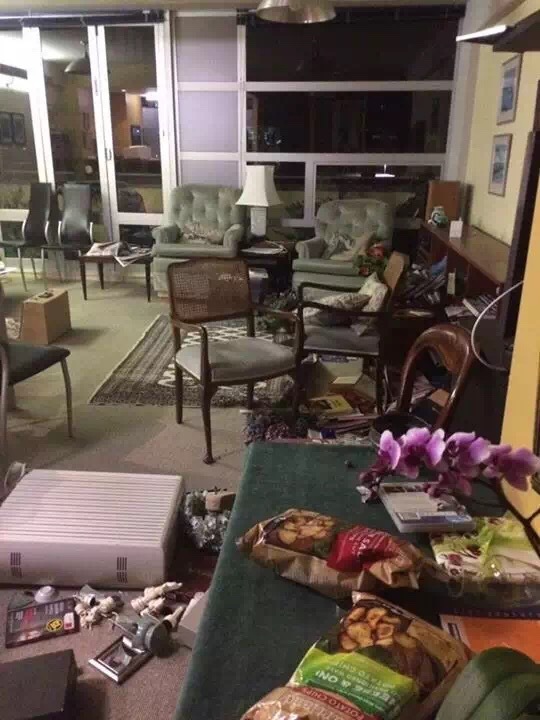Related reading:
WELLINGTON, Nov. 14 (Xinhua) -- Further casualties beyond the two confirmed deaths from a severe earthquake that rocked New Zealand early Monday cannot be ruled out, says Prime Minister John Key.

Photo taken on Nov. 14, 2016 (local time) shows a living room of a house in Wellington, New Zealand. A major earthquake rocked South Island of New Zealand in the wee hours of Monday, followed by a series of strong aftershocks and a tsunami warning. (Xinhua)
Police confirmed the two deaths, saying emergency services were still working at the scenes.
One fatality occurred a property at Mount Lyford, north of Christchurch, on the east of the South Island, and the other at a reported collapsed property in Kaikoura, on the northeast coast of the South Island.
"At this stage no further details can be released," said a Police statement.
Key and Acting Civil Defence Minister Gerry Brownlee said in a televised press conference that at least two fatalities had been reported, but emergency services were still trying to reach areas that had been cut off.
"On the very best information we have at the moment, we think it's only likely to be two, but of course there are isolated parts of the country in which we don't have perfect eyes on, so we can't be 100 percent sure, but we're not aware of any that we're not reporting," said Key.
"We don't have any indications at this point to believe that will rise, but we obviously can't rule that out because what's going to happen now as we have daylight is we can do a proper assessment. Communities will obviously go out and reach out to their neighbors and their friends and their workmates to get a sense of the damage and making sure people get support."
Air force and medical rescue helicopters were flying into the town of Kaikoura, which hs been cut off by road and is believed to be the worst hit area, they said.
Structural engineers were also checking buildings in the capital, Wellington, where the quake was felt strongly.
The magnitude 7.5 earthquake was centered 15 kilometers northeast of Culverden, on the east of the South Island, and struck at 12:02 a.m. on Monday, according to the government's GeoNet monitoring service.
The quake was 15 km deep and was felt widely throughout New Zealand.
It is being followed by many aftershocks, the largest of them a magnitude of 6.2.
The Ministry of Civil Defence and Emergency Management (MCDEM) issued a tsunami threat along most of the country's eastern coasts after the initial earthquake and urged residents to move to higher ground.
The first tsunami waves had arrived, but it was too early to know what damage or casualties there might have been, said a statement from the MCDEM.
"Further waves should be expected and may be larger or more dangerous," it said.
The tsunami warning was later downgraded to a marine and beach threat, but the MCDEM still urged people to stay off beaches, stay out of the water, and not go sightseeing.
New Zealand is frequently rattled by earthquakes, most of which do no damage and cause no injuries, but Monday's quake brought back memories of the 6.3-magnitude quake which killed 185 people in Christchurch in February 2011.















